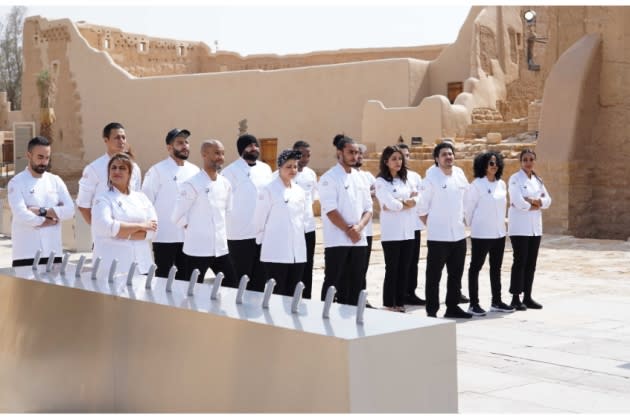How ‘Top Chef Middle East’ Helps Push Gender Parity and Culinary Diversity

“Top Chef Middle East,” the Arabic-language adaptation of Bravo’s influential TV series, is breaking new ground in the region by pushing gender parity, promoting culinary diversity and making the local industry proud.
Season 5 of the reality culinary contest, which airs on top broadcaster MBC across the Middle East and North Africa (MENA) region, recently scooped an International Emmy nomination. That’s a rare accomplishment for the Middle East TV industry, which stands as a testament to “how important the Middle East is for unscripted content,” said Ana Langenberg, NBCUniversal Media’s SVP of format distribution and production. She also noted that the Emmy nom “speaks for the quality of what is being produced, especially on MBC and its channels.”
More from Variety
While there are 29 international versions of “Top Chef,” which have been sold in over 175 territories worldwide, “Top Chef Middle East” is currently one of the most successful versions of the show around the world. This is partly due to the hefty investment that MBC put into the format from the start, said MBC channel manager Tariq Al Ibrahim. “From Season 1 onwards it’s always been a top quality show with high production values and an extra emphasis on making it very engaging,” he said.
But the recipe for its success, as showrunner Rabih Rammal pointed out, is that from the start “we tried as much as possible to understand our culture…of the Middle East.”
Back in 2016, when Season 1 of the show launched, cooking in MENA was not perceived as something glamorous.
Instead with “Top Chef,” “We tried as much as possible to create this image that cooking is an art. It’s not sitting in a hot kitchen, working to just feed people. Culinary is an art; it’s magical. It’s totally different from what we heard from our fathers and grandfathers,” said Rammal.
The message has been received.
While the International Emmy-nominated Season 5 of “Top Chef Middle East” was won by 24-year-old Lebanese chef Charbel Hayek — who was that competition’s youngest contestant — the winner of the show’s fourth season in 2020 was Saudi Arabian chef Sama Jaad. She made headlines for being both the first Saudi to be awarded the title of Top Chef since the show launched its Arabic version and, more significantly, for being the first Saudi woman to score the top spot on the show.
A woman from Saudi winning “Top Chef” had an impact on the culture that transcended Saudi Arabia in itself. “Before she won, just like in the rest of the Middle East, it was a little bit weird to be a female chef,” said Rammal. “But from then onwards her victory has helped a lot with the culture in making people understand that a chef is a chef; it’s not male or a female.”
The other aspect that characterizes “Top Chef Middle East” is that the MENA region is made up of 22 countries. So the competing chefs come from all different culinary backgrounds. The hardest part is that the chefs on the show often have to create a dish that is not from their own turf — and that’s an integral part of the show.
“We set the challenges in such a way that people who know how to cook Saudi, or Algerian, or Moroccan, or Egyptian, will have to cook a dish from a different country,” said Rammal. “And then, if they want to put their specific taste and their experience in the dish — and they always do — they are free to do that, of course. But out of their comfort zone.”
So by the end of each season, all the chefs came out with an extra wealth of experience because they learned about different Middle Eastern cooking cultures.
As Rammal put it: “In the Middle East, ‘Top Chef’ is a cooking academy more than anywhere else around the world.”
Best of Variety
Sign up for Variety’s Newsletter. For the latest news, follow us on Facebook, Twitter, and Instagram.
